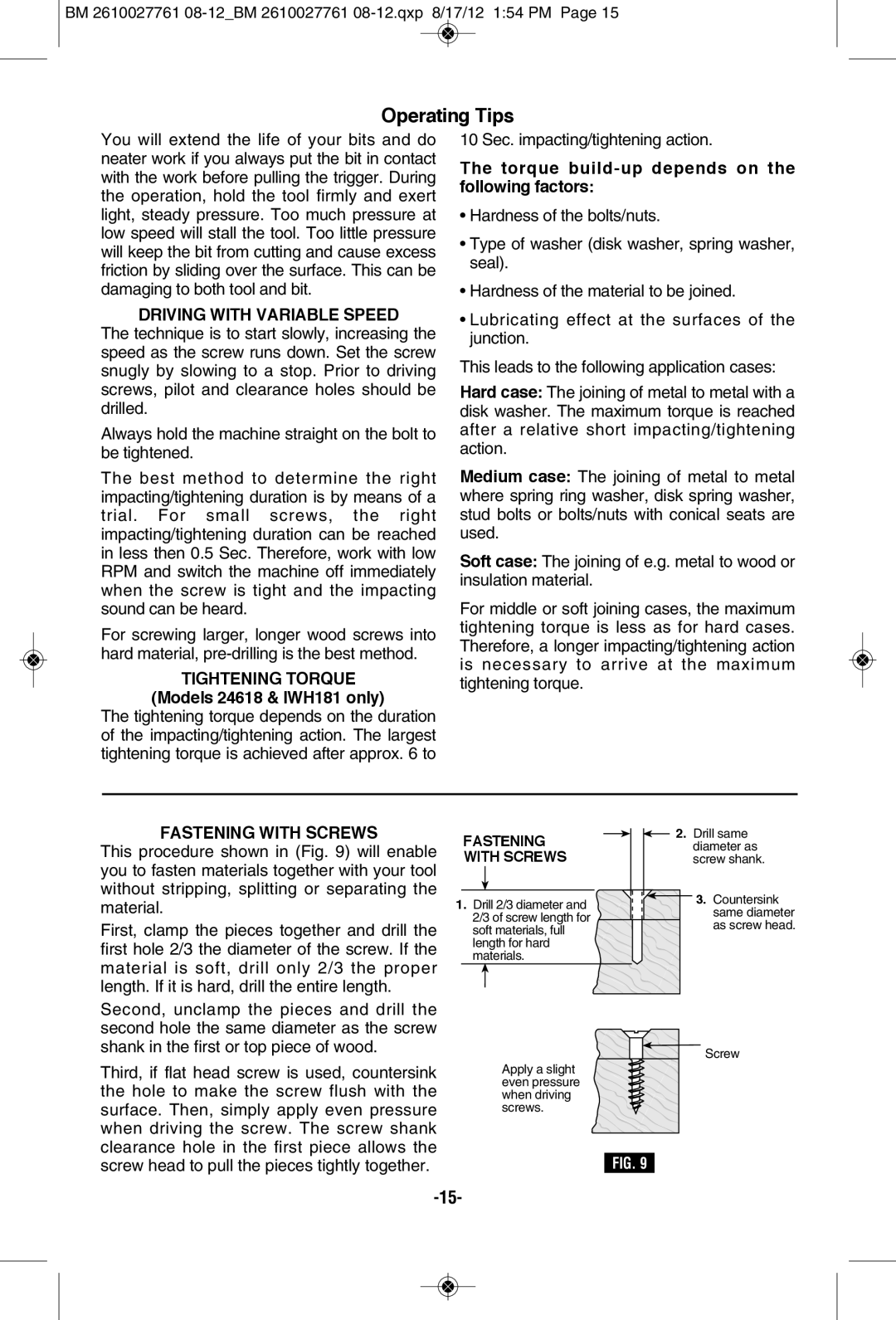CLPK224-181, CLPK221-181, CLPK222-181, 24618-01, 24618BN specifications
Bosch is renowned in the power tools industry for its innovative designs and reliable performance. Among its impressive lineup, the Bosch Power Tools 25618BN, 25618-01, 25618-02, 24618BL, and 25618B stand out for their versatility and efficiency.The Bosch 25618BN is a cordless drill/driver that features a powerful 18V lithium-ion battery, ensuring long run times and quick recharges. Its two-speed transmission provides versatility between high-speed drilling and high-torque applications. The lightweight design allows for better maneuverability in tight spaces while the built-in LED light facilitates visibility in dimly-lit areas.
Similarly, the Bosch 25618-01 and 25618-02 models are part of the same eco-system, delivering excellent torque and lightweight handling. The 25618-01 is equipped with an advanced electronic motor protection feature that safeguards against overheating, extending its operational life. The 25618-02 offers a 1/2 inch single-sleeve chuck for easy bit changes, allowing users to switch tasks quickly and efficiently.
Further enhancing the range, the Bosch 24618BL model is known for its exceptional balance and ergonomics. This model is engineered for heavy-duty applications while maintaining user comfort. Its robust construction ensures durability across various job sites, making it a favored choice among professionals. The 24618BL also incorporates a flexible battery system that is compatible with other Bosch 18V power tools, making it a versatile addition to any toolkit.
Lastly, the Bosch 25618B model is designed for maximum performance with a powerful motor delivering outstanding speed and torque capabilities. It features a built-in belt clip, enabling easy transport around job sites. The soft grip handle enhances comfort during prolonged use, minimizing fatigue.
Each of these models incorporates Bosch’s commitment to advanced technology, durability, and user safety. Their performance characteristics make them suitable for a range of applications, from DIY projects to professional construction tasks. Whether you are a hobbyist or a seasoned contractor, the Bosch Power Tools 25618 series ensures reliable results and outstanding value.

